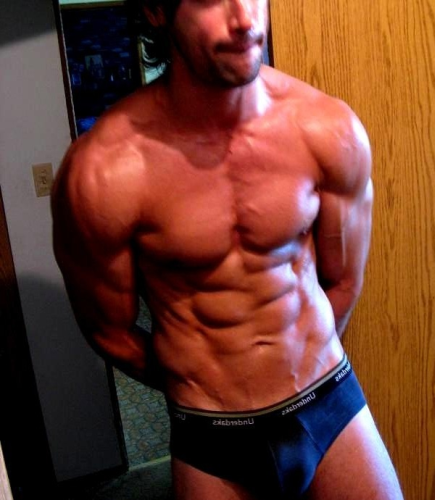
The days of trying to bulk up as much as possible and look like a bodybuilder are out. Now the body image most men are looking for and most women find attractive is that of professional sprinters and swimmers. They are lean and toned with just the right amount of muscle and body fat to turn heads wherever they go. This is not a simple look to achieve, though. You must follow the right training protocols and make sure your diet is in check.
Top 4 things you should do
1. Cardio sprint training
When it comes to cardio, the preferred method is interval training. This allows you to push your body for a short period of time, and then take a period to rest and recover before going once again. It is preferable because it will also help develop your fast twitch muscle fibers and will kick your metabolism into high gear.
Any form of exercise that is very intense will help with your fat-burning process as the body will expend a great deal of calories repairing the damaged muscle tissue once you are finished your workout. Try to incorporate at least two sessions of interval training into your week — one focusing on longer intervals of one minute with two minutes of rest, and the other focusing on shorter intervals of 20 to 30 seconds with one to one and a half minutes of rest. Note: The shorter the interval, the more intense it should be.
2.Plyometric training
Plyometric training uses exercises that require you to move very quickly using only your body weight. They are great for developing explosive power and strength. Since you are not acting against a heavy weight load, you will not get the same hypertrophy effects that result in the bulky muscle look. Typical plyometric exercises are:
Box jumps: Jump onto as high of a box as you can, and then back down again. For added difficulty, try doing this off one leg.
Squat jumps: Begin by moving from a standing position down into a full squat, then rapidly push off the ground using your thigh muscles to propel yourself as high as possible. Land once again in a full squat position and repeat 10 to 15 times.
Clap push-ups: Perform the normal push-up action, but use your muscles to propel your body off the ground in the up phase. While in the air, clap your hands together and then land back into the push-up position to complete the downward portion of the exercise.
3. Circuit speed training
Circuit training is another good option for those looking to get lean and toned. It works in a similar way to supersets, but instead of working opposing muscle groups, you complete an entire circuit of exercises for your whole body. Perform one set of each exercise before moving onto the next one with little or no rest in-between. Once you finish one whole circuit, take a few minutes to rest, and then complete it again one to three more times.
Additionally, you may want to focus on increasing the velocity in which you perform the concentric (working portion) of your exercise, as this will help develop your fast twitch muscle fibers more.
4. Supersets
Supersets are an exercise technique in which you perform one set of an exercise for one muscle group, and then another set for an antagonistic group. For example, complete one set of bicep curls followed by one set of overhead tricep presses. Since these muscles oppose one another, while one is working, the other can rest. This both cuts down on your total workout time and increases the overall amount of calories burned during your training session.
Getting lean and toned is dependent on burning more calories than you take in to remove excess body fat, so anything that helps you accomplish this is a step in the right direction. Try to incorporate these types of exercises into your workout as much as possible. Good examples are chest presses supersetted with bent-over rows and leg extensions supersetted with hamstring curls.
Top 3 things to avoid
1. Taking long rest periods during sets
The general guideline for building a great deal of mass states that you should allow ample rest time between sets to let your muscles recover. This enables you to lift maximally on your next set. While this principle still holds true for putting getting big, reducing this rest time will increase your metabolism, helping you get leaner.
Since your goal is not to achieve your maximum size, the shortened rest breaks will not hinder you in getting good muscle definition. You still need to rest enough so that you can challenge yourself, but there is no need for two-minute rest periods anymore.
2. Neglecting all forms of cardio
If you want to get that lean look, you have to do some cardio training. Former methods enforced the principle of boycotting all cardio as it burned precious calories that could potentially go toward muscle growth. This is fine if you don’t wish to control your body-fat levels, but in order to see your hard-earned muscles, cardio is essential.
3. Eating everything in sight
Doing this will add mass, but a greater portion of it will be body fat, bringing you further away from the toned physique you’re looking for.
*Also note
If you are looking to develop a defined yet muscular body, put some of these principles into effect. You do not have to be huge to be strong, and most people these days prefer a more toned appearance over a bulky look. Don’t forget to stretch, make sure your diet is free from all junk and processed foods, and make sure you are eating five to six times a day to keep your metabolism up. Once you have mastered both the workout and the diet, your physique will get noticed.


